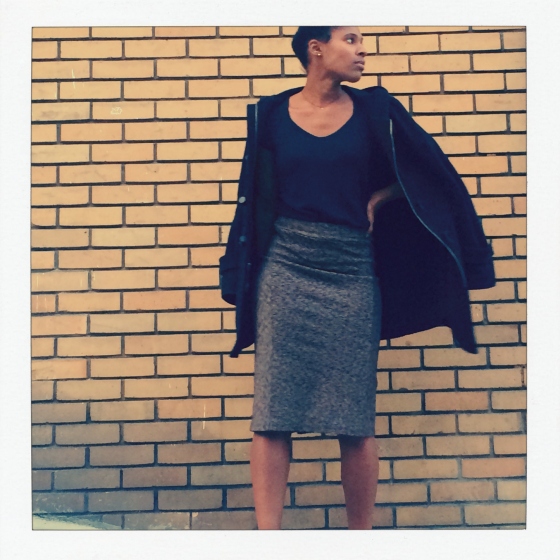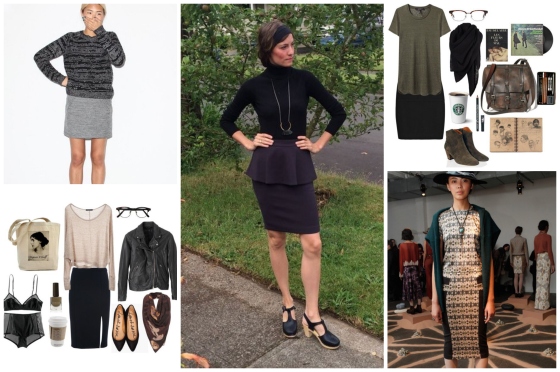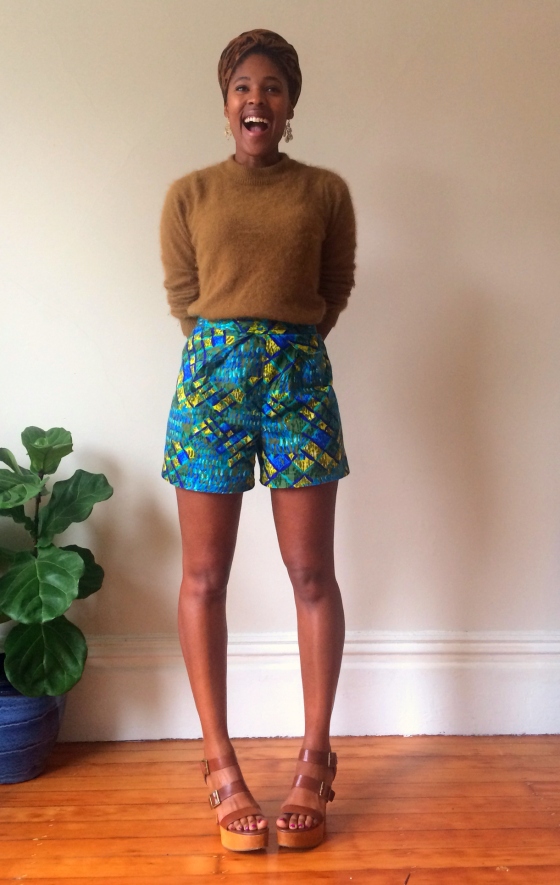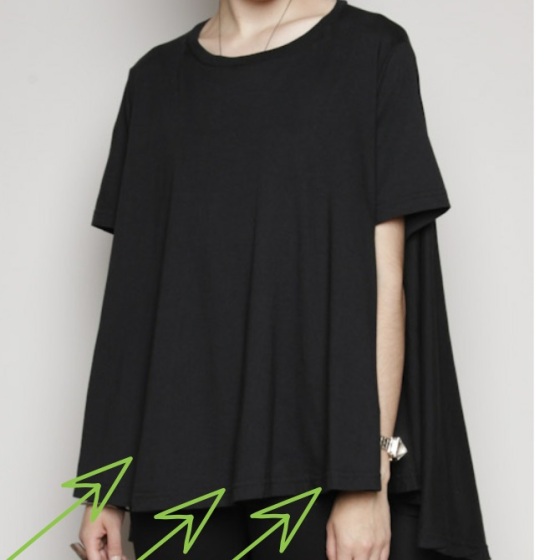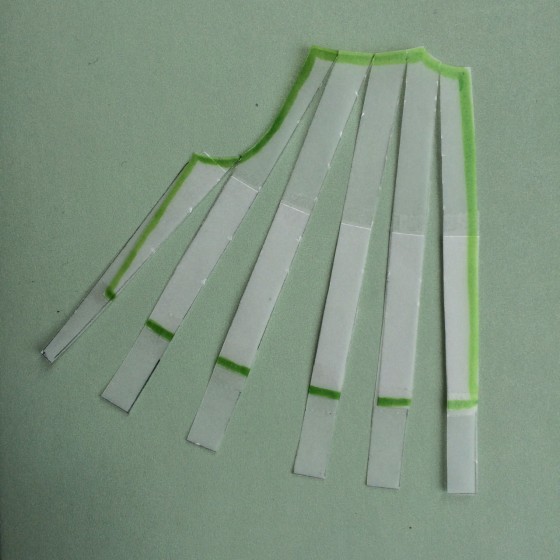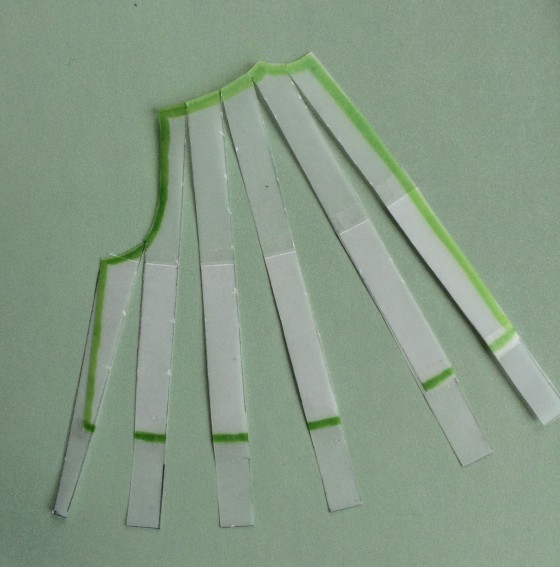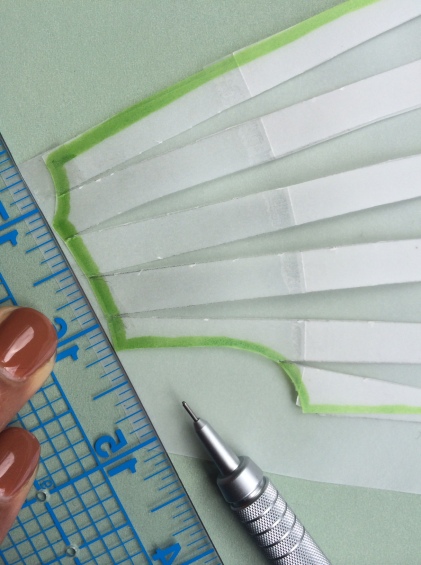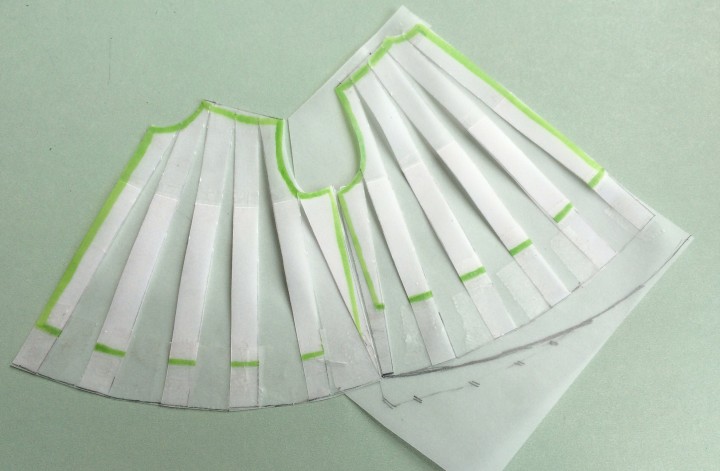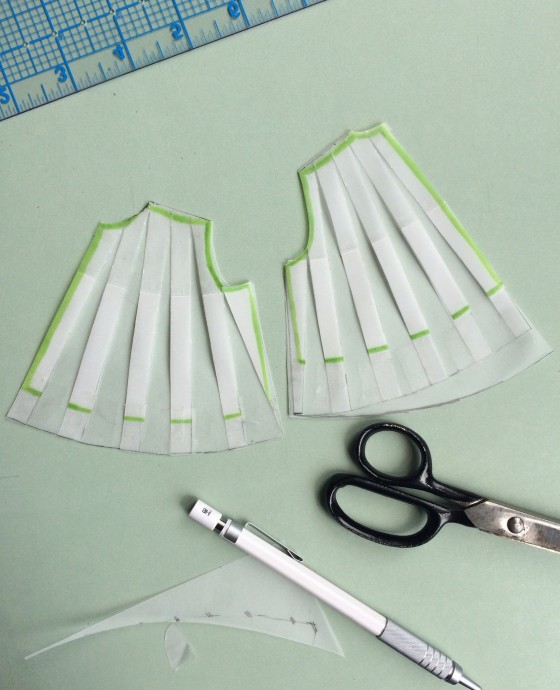This begins as a tale of sewing synchronicity. I was at the fabric store (getting a few yards of jersey cut, even though I just went in for a double needle—you know, as you do), and the woman across the way was getting herself a yard of black neoprene. When asked what she had planned, I overheard her saying something about custom swimwear and a traveling sewing machine. Needless to say, I had to speak to this amazing gal. She introduced herself as Rachel and was kind enough to take me up on a cup of coffee and regale me with her tale of sewing radness. Today, I’m happy to share the highlights of our conversation with you!
So, tell us how you got started with sewing and swimwear design.
I grew up in Victoria, Canada, and my grandmother and my great aunt were both professional seamstresses, so it was always in the family. I was brought up sewing; from the time I was 6 I was learning on my mom’s machine. My sister, who is ten years older than me, she was sewing as well. All our Christmas presents for each other would be hand sewn.
Then in high school I’d go to thrift stores and buy wedding dresses, or grunge t-shirts, and rip them up or sew lace or leather bits on them because I wanted to be different and have something no one else had. And I did! Some of them worked out super well. Some of them I look back and I’m like, oh my God… But that’s where I started to first experiment with putting different fabrics together. My line has still got that element to it. I experiment a lot with putting together different materials, things that wouldn’t necessarily go to together.

And how did you get started with your swimwear line?
I’ve been living for about the last seven years in Central America, and lived for about five years in Honduras. I was a scuba instructor, which is how I got into sewing swimsuits. I moved there when I was eighteen, just after high school, and all my friends and I were in the water all the time.
It was this tiny island, only four to five thousand people living on it, and people couldn’t get things imported. Bathing suits were something that just wasn’t available. I mean, there were a few, but they were all small sizes. There was no variety, no quality. For bigger women, there was nothing they could wear. So I let people know I was experimenting with making things for myself and that I could try making things for them too. I would take trips back and forth to the mainland to get fabric. There was one ferry a day; a three hour boat ride. I never learned the techniques of stretch sewing until I started learning on my own, like how to put in elastic and use twin needles. I just Googled everything.
Recently, I’ve decided that I’m going to call Victoria home base again. The nice thing about running my business online is that I can be fairly flexible. Wherever I go, if I have a machine, or if I have someone else’s machine, I’m good.

Let’s talk about that a bit more, because I think it’s so cool! I have to admit that when I first heard you talking about traveling with a sewing machine my mind was a little blown, because for me I feel that a huge part of sewing is having the space to do it in. You know, I feel like I need my space, I need my stuff…
I’ve always tried to live super simply. My thinking has been I need to be able to fit everything that I love into a backpack that I could throw on and travel with. Travel has always been super important to me.
When I design I just make the pattern from formulas, or my body, or someone else’s body. Mostly I just use math. You know, that takes up less space! I’ve worked on little, tiny plastic kitchen tables with one cruddy little machine. Now my company is growing to the point where I need to have industrial machines, and I need to have a studio to call home base. But I still need to be able to travel!
You have a machine you can travel with?
When I started out, I had a little machine I would travel with. I was working part-time in PR, so every time I would go on a business trip I would always pack my sewing machine. I’d work during the day and then at night I’d sew. It was just a dinky old Brother sewing machine. Nothing special, but it was all plastic, so it was light and I could take it with me on a plane. More recently, I was in San Jose [Costa Rica] for a while and set up a home base, including a Janome serger. At that point I figured if I traveled I could pick up a whatever sewing machine on Craigslist for less than a hundred bucks, but the serger was something I needed to take with me. I’d carry it on the plane with me. It’s pretty heavy, but I’d lug this serger around with me.
I love that! That’s real passion.
It totally was.
You were doing this even before you launched your business?
Yeah, when I was just sewing for me, and for friends, I would always take my sewing machine. That’s what I wanted to do at the end of a workday, to relax or whatever. It really worked at the time; I was just doing it part-time and I would get these fun little orders to do. I’m still able to do [some work on the go]. The fabric you saw me buying the other day was for a present to give to my friend for letting me stay with her.

So you would take a machine. What else would you take with you?
Oh yes, my travel kit! I had a bobbin saver, my pincushion, my rotary cutter and a mat. I’d put all my patterns into these big manila envelopes and pack those too. It was so messy and terrible, but it would fit in my suitcase. I never got one of those big cutting mats. I just got little ones and taped them together so I could fold them up like an accordion.
Oh, okay! I was thinking, How the heck did she take the mat?
Yep, I had three little cutting mats all taped together on the back. I would take that with me, and a pack of needles. I didn’t even bring thread because that’s something I could always buy easily. And… my stitch ripper. Really, not much else!

You set yourself up in this way where you were forced to go out into the world and find your community.
That’s very true. I did like that because it was a way to get connected to a lot of people. You know, the people at the fabric store would get to know me as the only English speaker. I was just starting to learn Spanish, and I’d go in and didn’t know the names of any of the fabrics. But once we started to form a relationship they were really great about letting me know what was going on, or if there was a new store I should go check out. But I’m also pretty much an introvert, you know? At the end of the day, I do like to just go home and sew.
I’m so impressed by what you did because I can get overwhelmed in fabric stores, especially in the notions department, even when everything is in my native language!
Every time I come up to North America I have this problem, coming from having just one of everything, just enough, and having to reuse things. I used to have to put bobbin thread on top of bobbin thread, eight colors on one spool! And then I come here and I can get all this stuff, and it’s cheap. I have to ask myself, Do I need all of this stuff? Do I need a magnetic pin holder? Twelve different rulers? It’s really tough for me, to try and just stick with what I know. But my new studio, there’s very little stuff. It’s pretty much bare minimum, and I like that.

Tell us more about your business!
I’ve been doing the business fulltime for the last year and a half. Before that I always had other jobs, but then I got to the point where I was like, “Actually, I can do this as a career, and I’m not gonna go broke!” That was super exciting.
It’s still really new, but I’m feeling pretty good about it. I did a lot of work over this last year upgrading my website to make sure everything is really simple, easy to use, and clear. I’ve been working with a little company in Ithaca, New York, doing consignment sales, and I just got my first big wholesale order. To do a whole batch of something is totally different because everything else I do is one-of-a-kind. People send me their measurements and I hand-pattern for each person to make a piece just for them. I do custom designs too, with people sending me an idea or concept they want me to work up. That’s totally the fun stuff for me.
That’s a great concept. Especially with things like lingerie and swimwear, when so much of our sense of ourselves and how we feel about being in our bodies is impacted by how we look in these garments.
I work a lot with the queer community and customers whose bodies don’t necessarily conform to the established standards of mainstream swimwear companies. It’s something I’m really passionate about because there are so many people out there that can’t find what they want and need. Sometimes people will come to me and say, “I need to hide this part of my body,” or “I need to emphasize this.” They may come with a list of restrictions or needs that are going to make the design process more challenging than just, you know, making a pretty bikini so I can sell a billion things. I’d much rather make something that’s going to work with that person for what their needs are.

It sounds like your ethics and what you want your life to look like have been just as important when forming your career as your passion for sewing has been.
Yes, that’s so much a part of my brand. At this point, I can’t really separate myself, my life, from the brand. I just switched over from using cottons to using bamboo. The quality of these fabrics is so much better, but I researched it and also found it to be more ethical. It uses less water, plus it’s more sustainable and renewable. This is what I would want from anything I would buy for myself. I realized I need to be offering something that feels really good ethically as well as on your body.
My ethics have been so strongly appreciated by my customers as well. A lot of shops charge more for bigger sizes because that uses more material. But I’ve said I will never do that. There’s no cap on the sizes that I offer. I offer between an xxs and a 5xl, but people can send me literally any measurements and it’s no more expensive. I feel really strongly about all people being able to find swimwear and undergarments that are good for their bodies. I feel really good about being able to offer that to people, to make that an accessible, safe, comfortable experience.
With your business taking off, do still have time to sew for yourself?
It’s something that I’m making more of a focus now. What I’ll often do, when I’m developing new ideas for a line, I’ll make a prototype of my idea for myself and wear it around, see how it feels, how well it holds up when I’m doing yoga or whatever. Sometimes they turn into something that I’ll offer, and sometimes they don’t. But either way I’ve made something for myself.

What, if any, ways do you find yourself engaging with the larger sewing community?
I’m newly back in Canada, so I’m just starting to branch out and go to places where crafts people are going to be, like craft fairs, flea markets, or even garage sales. I’ve found that there’s a lot of overlap with handmade and vintage too, so talking to little shop owners can be a great way to connect with makers. I’ve met people at parties and we’ve bonded over sewing. I do tend to talk about sewing a lot because it’s such a huge part of my life, and this is what I love. When I’m making new friends, I definitely want to make sure they’re the type of people who are into that. I’ve been around people before who don’t see it as a legitimate job, and that’s been really tough and frustrating.
It’s very much a movement here, whereas where I was in the third world it’s not. Sewing is seen as “something my grandma does,” or “only poor people sew because they need to in order to have clothes.” This movement of crafters, that hasn’t caught on. People are very negative when talking about crafting, because the thinking is if you’re crafting it’s because you can’t afford to buy new clothes. And so there wasn’t any excitement, there wasn’t any reason why you would want to do that. It was very much looked down upon.
That is really interesting, that connection between economic prosperity and crafting. Of course, now that I hear you say it, it seems so obvious that there is a luxury to crafting for pleasure, as a hobby, rather than out of necessity.
Yes, my friends [in Central America], they would probably be embarrassed to talk about the fact that they had handmade clothes. Because it would seem like, “My parents had to make me these clothes because they couldn’t afford to buy me new ones.” So for me, saying this is something I do for a living, the response is, “Why would you want to do something like that?” And there’s not that feeling that you want to pay more for handmade clothes, because the value is lower. The attitude is, “Well, it’s just handmade. If I can have a brand name sweater, why would I get one handmade?”
Here, the value of the work and the time that goes into something that’s handcrafted is much more understood. And I also think people here see that if they’re supporting a crafts person, there’s a very good chance that they’re supporting their community, and putting money back into their local economy. That was a motivating factor for my move back to Canada. I wanted to be part of that community, and be where people value my work.

What are the best things that your skills, experience, and passion for sewing have brought to your life?
Well, the main thing for me is being able to be self-sustaining. To be able to not just craft for fun. That people want to pay me money for my skills, that’s huge. It still blows my mind: People want to pay me money for stuff I make! I’m still new at this, and I’m a terrible self-critic and really hard on my work. So just that fact that my business is self sustaining, that I don’t have to take another job… It just blows my mind everyday.
…..
I hope you enjoyed learning that little bit about Rachel and the inspiring work she does as much as I did! I find it wonderfully inspiring to hear from other passionate seamstresses and to learn something about the unique ways people have for incorporating sewing into a lifestyle and, as in Rachel’s case, sometimes even a living. I was also really intrigued by her perspective on the attitudes toward sewing and handcrafting in different parts of the world.
Do you take your sewing with you when you travel, as Rachel does? What ways have you found of engaging with other sewcialists and keeping your crafty passions alive when you’re on the road?

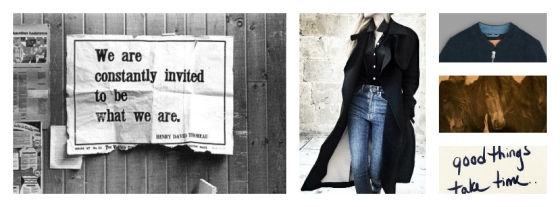







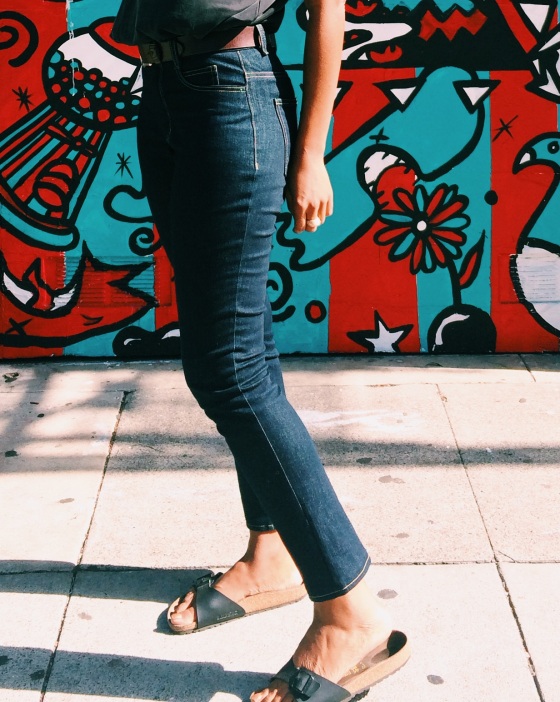

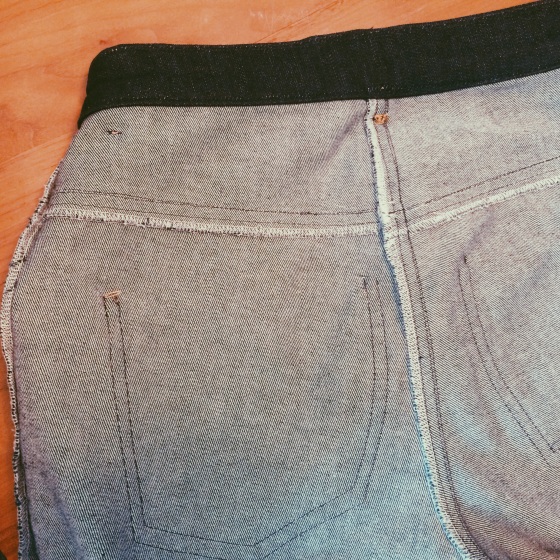

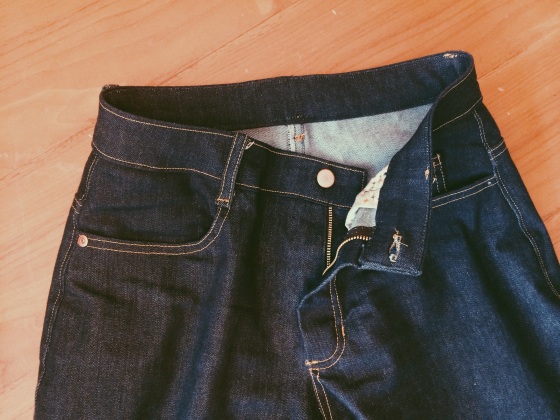
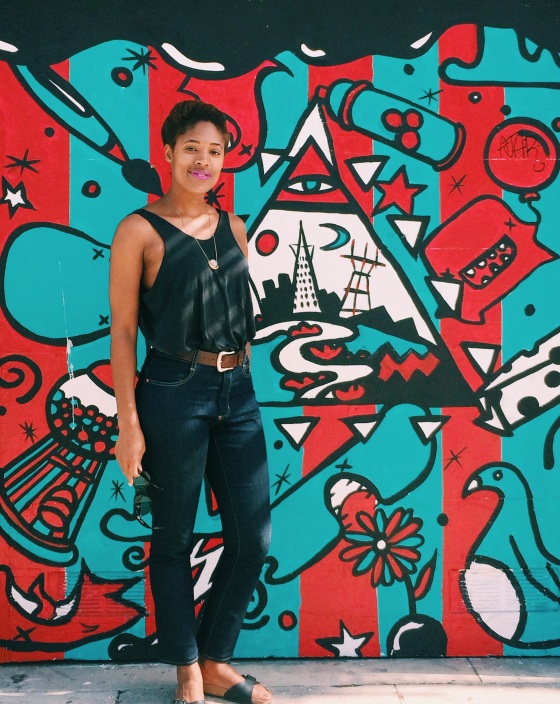


 A friend is getting married later this fall, and as part of the lead up to the big day a group of us took off to Palm Springs for a bachelorette celebration! (Unrelated: Should bachelorette parties maybe just be an annual thing, celebrated each year of a ladies ongoing singlehood? It’s just a little disappointing to wait until you’re signing off to celebrate, but I digress…) The lead up to this little vaca provided an awesome opportunity to go into sewing overdrive mode as I attempted to throw together some new Palm Springs appropriate me-mades. I ended up with two dresses and this suit, but I only ended up wearing the suit, partly because the slightly hasty way I threw together the dresses made me feel less confident about them. All those little details that take a piece from “homemade” to “handcrafted” take time, and I was in a weird not wanting to take time kinda mood. In the end, you reap what you sew. (Hah! I’m so fired for that one. )
A friend is getting married later this fall, and as part of the lead up to the big day a group of us took off to Palm Springs for a bachelorette celebration! (Unrelated: Should bachelorette parties maybe just be an annual thing, celebrated each year of a ladies ongoing singlehood? It’s just a little disappointing to wait until you’re signing off to celebrate, but I digress…) The lead up to this little vaca provided an awesome opportunity to go into sewing overdrive mode as I attempted to throw together some new Palm Springs appropriate me-mades. I ended up with two dresses and this suit, but I only ended up wearing the suit, partly because the slightly hasty way I threw together the dresses made me feel less confident about them. All those little details that take a piece from “homemade” to “handcrafted” take time, and I was in a weird not wanting to take time kinda mood. In the end, you reap what you sew. (Hah! I’m so fired for that one. )
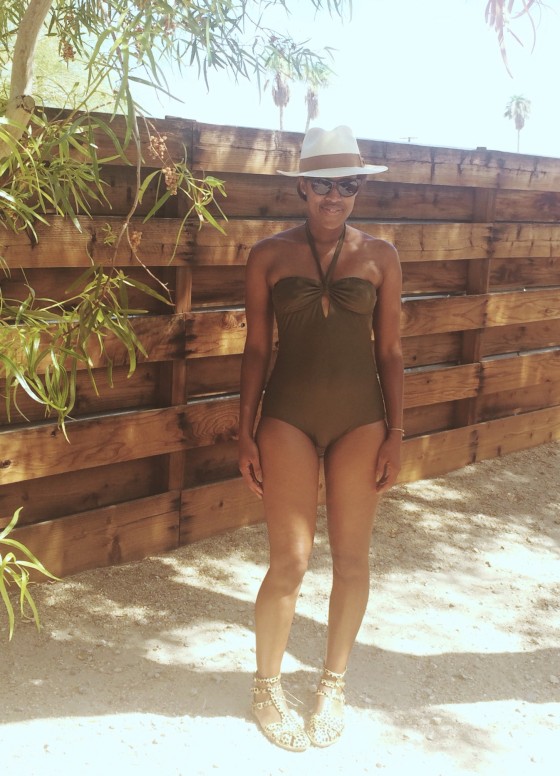
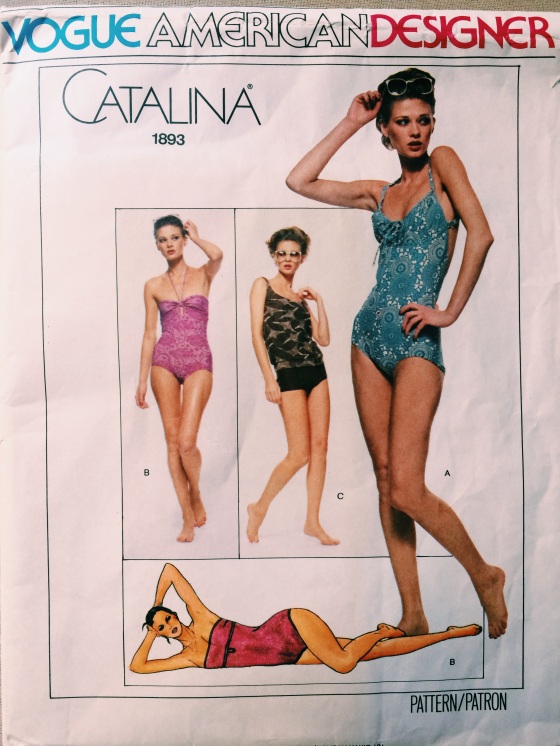
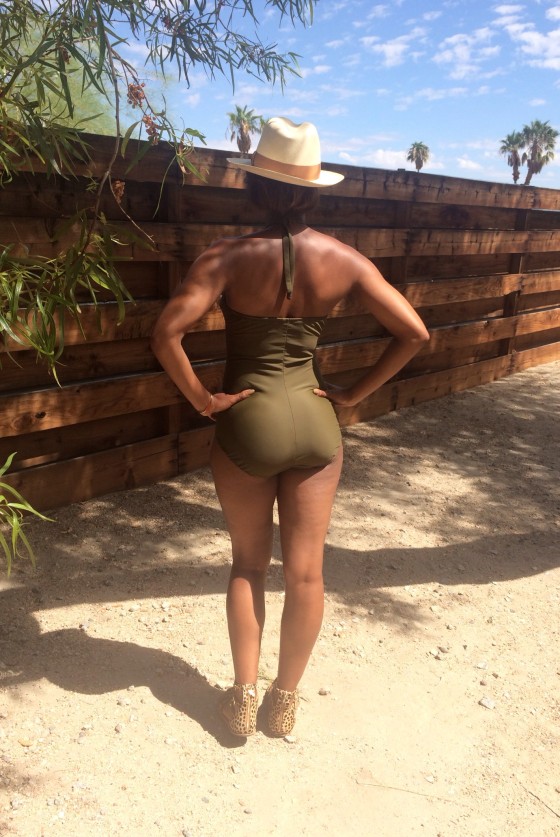







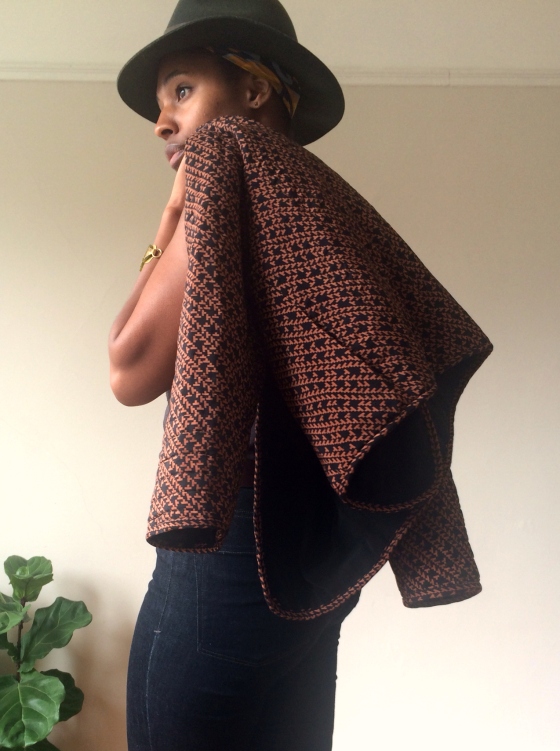
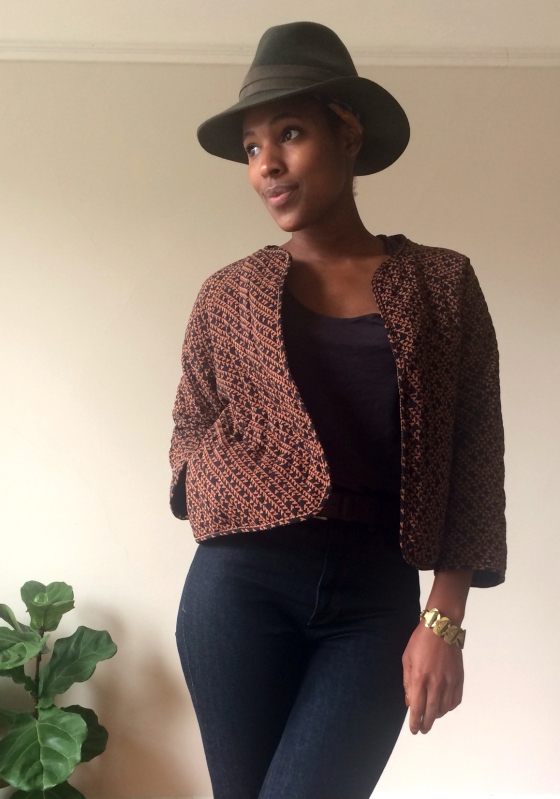


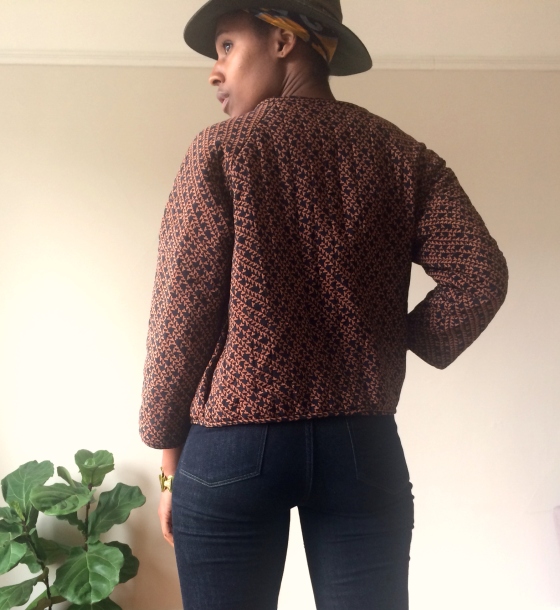


 With visions of many Dolly-esq dresses dancing in my head, I decided to focus on getting the fit of the bodice as close to perfect as possible. And I think (with the helpful hands of my trusty housemate!) I did pretty good. (Uhm, full disclosure, I may not be wearing a bra in these pics, which may have effected the fit at the bust. So, there’s that.)
With visions of many Dolly-esq dresses dancing in my head, I decided to focus on getting the fit of the bodice as close to perfect as possible. And I think (with the helpful hands of my trusty housemate!) I did pretty good. (Uhm, full disclosure, I may not be wearing a bra in these pics, which may have effected the fit at the bust. So, there’s that.)

